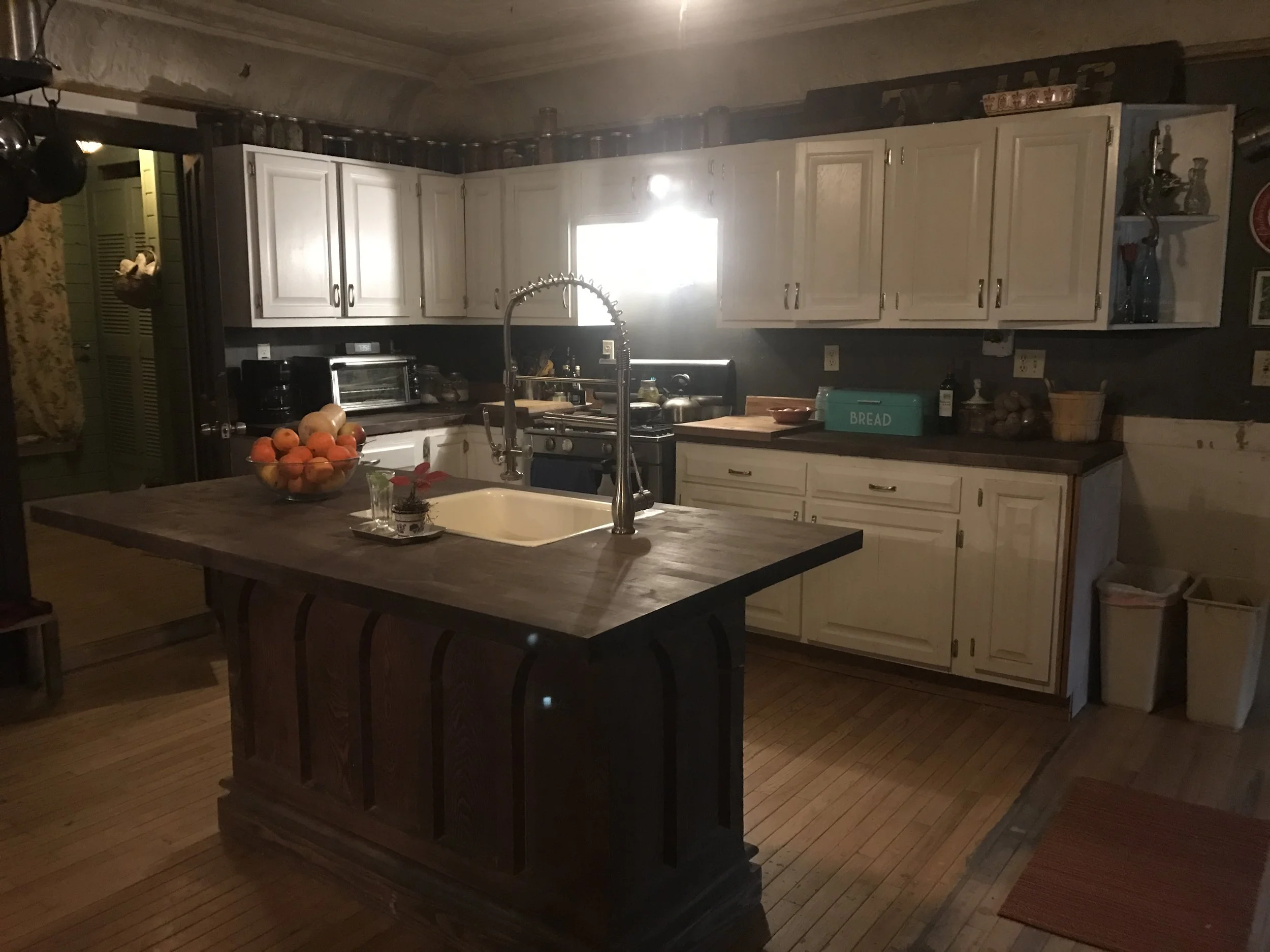Decades ago, a guy who went by the nickname "Poppy" painted a small mural of Pan on a wall of Better Farm's dining alcove. Poppy—or possibly someone else—then nailed a homemade frame onto the wall over the painting.
In Greek mythology, Pan is the god of the wild, shepherds and flocks, nature, of mountain wilds, hunting and
rustic music, and companion of the
nymphs. And since sometime in the 1970s or 1980s, he's been keeping a trained on eye all the goings-on at
Better Farm.
I've long wanted to invite visiting artists to add their own mini-murals to the wall, but got so caught up in large-scale projects (like a
mural in a bedroom upstairs, another one
in the birdhouse, and an almost-lifelike
wooden family portrait-turned-roadside attraction), the last four years haven't seen any add-ons to the Wall of Pan in the kitchen. 'Til now, of course.
Last month's intern
Zoya Kaufmann has a big-time passion for art and, well, bugs. So when she was invited to make a small mural of her choosing alongside Pan, she couldn't resist. Inspiration drew on her insect intrigue, combined with an inclination to paint something mimicking the mood of the Pan portrait.
Zoya explained, the Pan mural is presenting viewers with an unusual vantage point of something we rarely pause to look at (or even begin to imagine). Running with this idea, she painted another such creature (albeit literal, not mythic): the
western conifer seed bug.
The western conifer seed bug,
Leptoglossus occidentalis, is a species of
true bug (Heteroptera) in the
family Coreidae. It was originally native to the warm-
temperate western
USA (
California,
Oregon and
Nevada) but has in recent times expanded its range and become an
invasive species in parts of
Europe. This
species is sometimes colloquially called
"the leaf-footed bug", and is sometimes mistakenly identified as a
stink bug due to the unpleasant aroma it emits when disturbed. In its native range the western conifer seed bug feeds on the sap of developing
conifer cones throughout its life, and its sap-sucking causes the developing
seeds to wither and misdevelop. Here's a photo of what a western conifer seed bug looks like:
And here's Zoya's painting from beginning to end, bringing this unusual sight directly into the foreground for your viewing pleasure:
For more information about Better Farm's sustainability program, click here.



















































































